Challenging torrential rains countered by cooperative bats in Costa Rica
Merlin and MTBC team members spent 19 days in Costa Rica last November on a filming trip for “Bat City” with its Director and Emmy
Cambodian farmers in the Mekong River Delta have a long history of attracting bats to their farms. Merlin has documented with photographs the step-by-step process of this win/win situation for the farmers and the bats. (Be sure to watch the video below!)
Cambodian farmers cut and dry the fronds of sugar palms and wire them together in bundles of 4-5 fronds each, 10 bundles per tree. Although these palms are common, most do not have enough dead fronds hanging close enough together to provide good bat roosts. Observant people apparently noticed that bats came only when several fronds hung close together and figured out that if they cut fronds and bundled them, they could attract more bats.
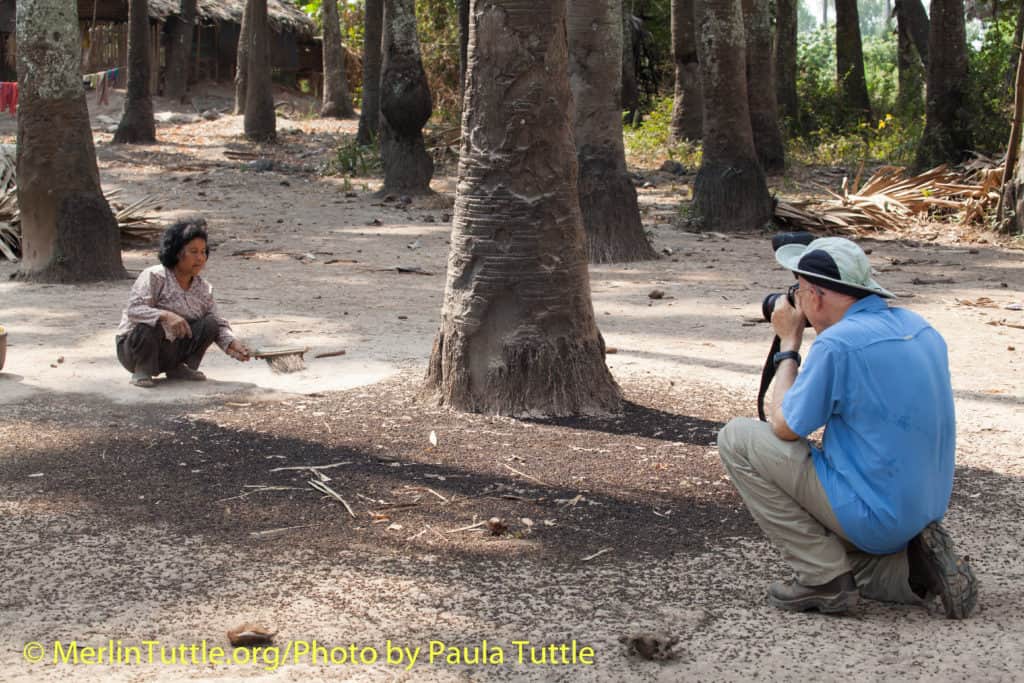
Long bamboo poles, securely strapped to palm trunks (with short side branches are used as ladders, enabling farmers to climb 50 feet or more. They hoist the bundles, one at a time, tying them to form a dense skirt beneath the crown of the tree. Once they’re wired firmly in place, they form secure shelter for the Lesser Asiatic house bat (Scotophilus kuhli).
The primary goal is collection of guano for crop fertilizer. To do this, some farmers spread mosquito netting to catch the droppings, while others simply sweep the droppings from hard earth beneath the tree.
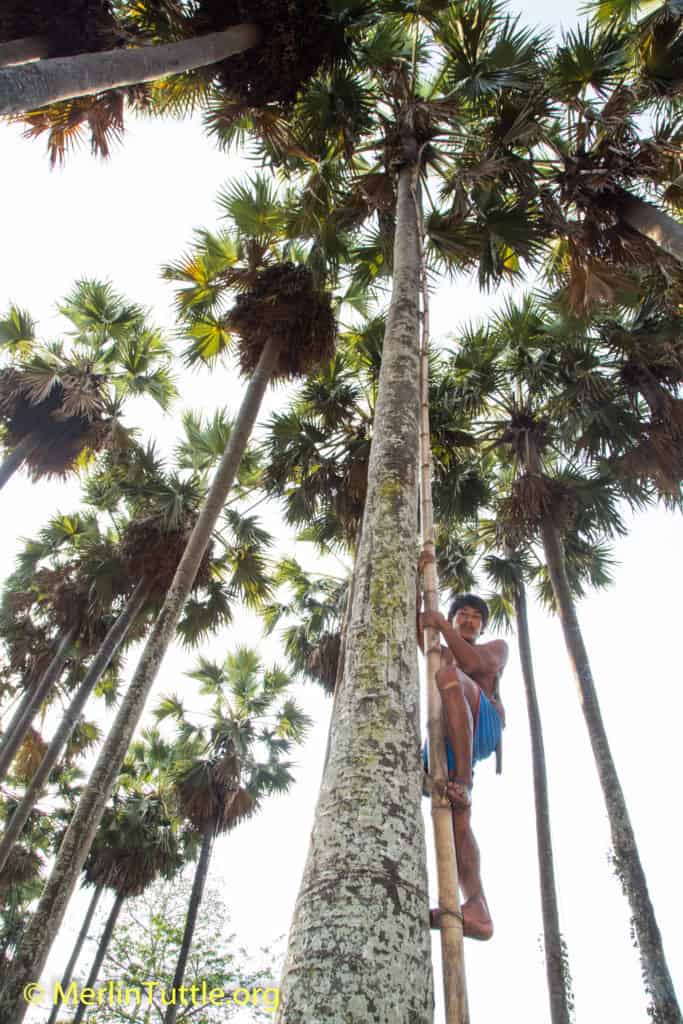
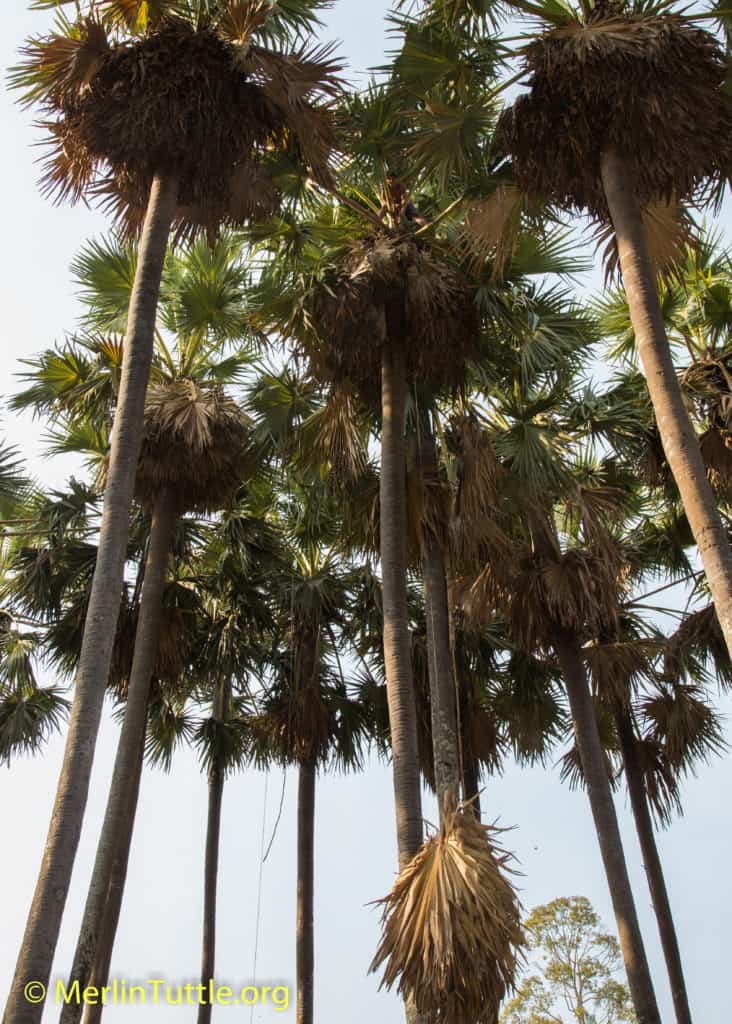
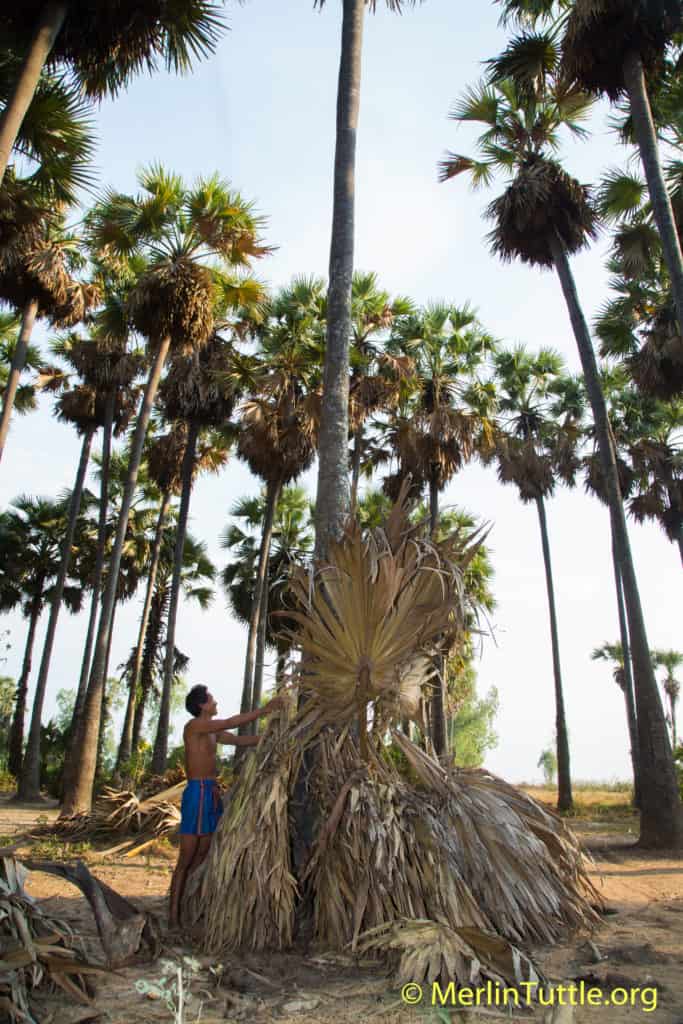
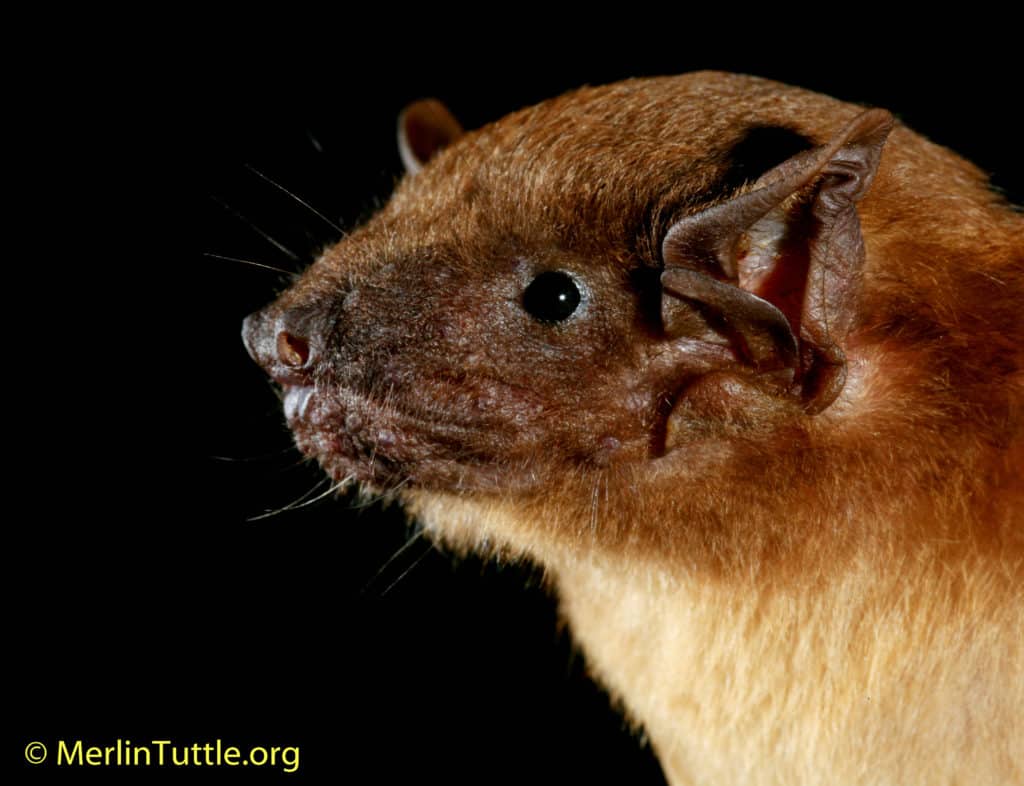
Love our content? Support us by sharing it!
Merlin and MTBC team members spent 19 days in Costa Rica last November on a filming trip for “Bat City” with its Director and Emmy
“Just like the old days, eh Heather?” Kent softly clicks his tally counter as he sits in his folding chair on the other side of
Bats can use sounds in many complex ways. They can sing and even have different dialects… When imagining a bat, the first thoughts that come
It was a long road to Austin, Texas. More than five years after my first introduction to Merlin Tuttle’s Bat Conservation as a teenager, I packed
2024 © Merlin Tuttle’s Bat Conservation. All rights reserved.
Madelline Mathis has a degree in environmental studies from Rollins College and a passion for wildlife conservation. She is an outstanding nature photographer who has worked extensively with Merlin and other MTBC staff studying and photographing bats in Mozambique, Cuba, Costa Rica, and Texas. Following college graduation, she was employed as an environmental specialist for the Florida Department of Environmental Protection. She subsequently founded the Florida chapter of the International DarkSky Association and currently serves on the board of DarkSky Texas. She also serves on the board of Houston Wilderness and was appointed to the Austin Water Resource Community Planning Task Force.
Michael Lazari Karapetian has over twenty years of investment management experience. He has a degree in business management, is a certified NBA agent, and gained early experience as a money manager for the Bank of America where he established model portfolios for high-net-worth clients. In 2003 he founded Lazari Capital Management, Inc. and Lazari Asset Management, Inc. He is President and CIO of both and manages over a half a billion in assets. In his personal time he champions philanthropic causes. He serves on the board of Moravian College and has a strong affinity for wildlife, both funding and volunteering on behalf of endangered species.